Five Speaker Jumper Comparisons For The SDA SRS 1.2TL

DarqueKnight
Posts: 6,765
Introduction
I recently upgraded the jumpers of my SDA SRS 1.2TL loudspeakers from AudioQuest Perfect Surface Copper+ (PSC+) to AudioQuest Perfect Surface Silver (PSS). During the course of the evaluation I decided to compare all the previous jumpers going back to the original equipment.

Figure 1. Top to bottom: 1. Original equipment jumpers, 2. Homemade jumpers made from DSR Silverline
speaker cable, 3. Homemade jumpers made from AudioQuest G0-4 speaker cable, 4. AudioQuest Perfect
Surface Copper+ jumpers, 5. AudioQuest Perfect Surface Silver jumpers.
The original equipment jumpers are Vampire Wire 12 AWG stranded wire. Cost: $0.
The homemade DSR Silverline jumpers are 10 AWG stranded speaker cable (copper and silver-plated copper strands) terminated with Monster Cable bananas. Cost: ~$15.
The homemade AudioQuest GO-4 jumpers have two 17 AWG solid core conductors and two 20 AWG solid core conductors for an effective size of 10 AWG. They are terminated with AudioQuest gold-plated BFA bananas. Cost: $75.
The AudioQuest Perfect Surface Copper+ jumpers have a 21 AWG, a 20 AWG, and a 19 AWG solid core conductor for an effective size of 15 AWG. They are terminated with AudioQuest silver-plated BFA bananas. MSRP: $185.
The AudioQuest Perfect Surface Silver jumpers have a 21 AWG, a 20 AWG, and a 19 AWG solid core conductor for an effective size of 15 AWG. They are terminated with AudioQuest silver-plated 500 Series bananas. MSRP: $429.
Listening Evaluation
Listening evaluation results are summarized in table 1. As I went up in wire quality the following overall improvements were heard:
1. More apparent sound level due to noise floor being lowered.
2. More clarity at the sides of the sound stage.
3. More sound stage depth.
4. More bass weight and articulation.
The song used for listening evaluations was "You are my love" by Gerald Albright ("New Beginnings" CD). The key points in the song I concentrated on were
1. The sound quality of the piano at the introduction.
2. The weight, detail and articulation of an electric bass slide at 1:42.
3. The ambient cues and detail of the background percussion instruments.
4. The overall weight, detail, and articulation of bass sounds.
5. The detail in reed and brass sounds of the alto saxophone.
As noted in my review of the AQ Perfect Surface Copper+ jumpers, they sounded bad upon initial installation (link to review). The Perfect Surface Silver jumper sounded good, and better than the Perfect Surface Copper jumpers, right out of the box. Further improvement was heard after 24 hours of conditioning on the Audiodharma Cable Cooker.
Measurements
Noise spectrum (Fast Fourier Transform) measurements were taken with an oscilloscope at the high frequency inputs of the right speaker. A 4 kHz test signal from Contemporary Communications' "Precision Test Signals" CD was used. The oscilloscope was a Tektronix TDS 2012. It is easier to see differences in the oscilloscope plots if you save the pictures and view them in succession.
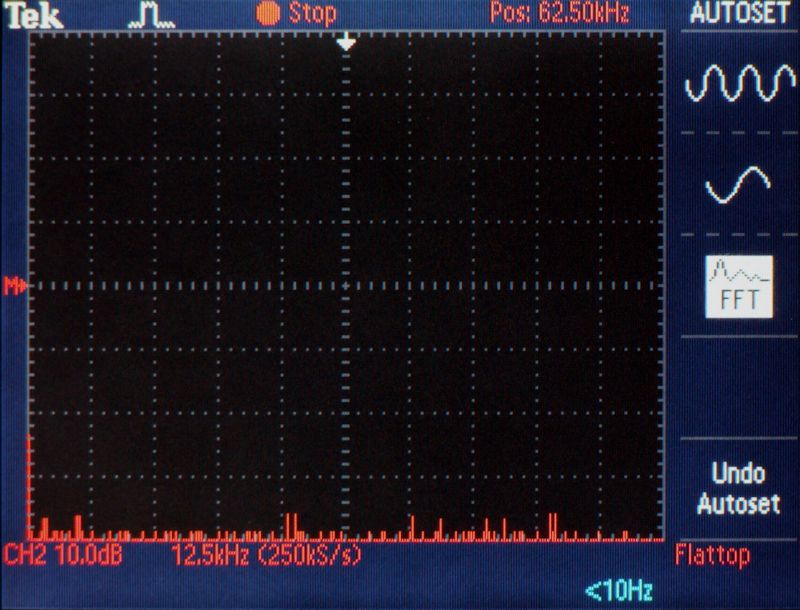
Figure 2. FFT plot of oscilloscope background noise.

Figure 3. FFT plot of 4 kHz signal through original equipment Vampire Wire jumpers.
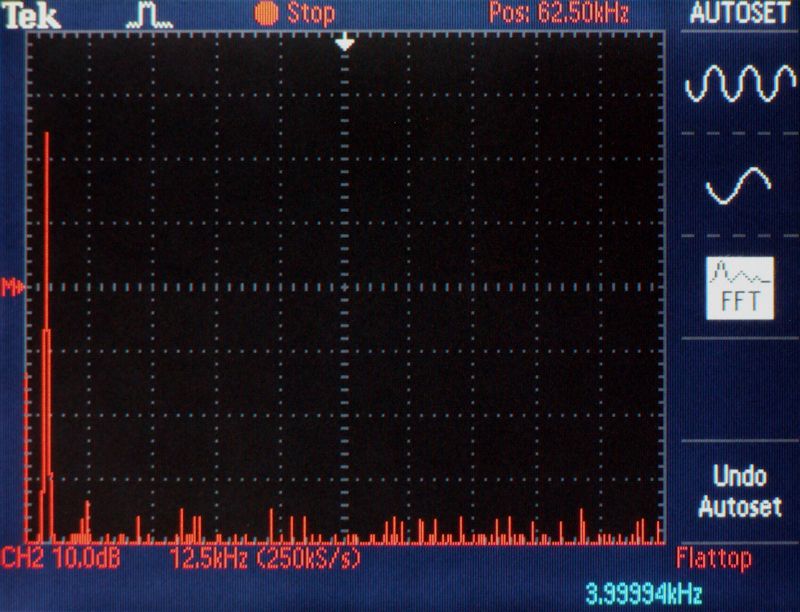
Figure 4. FFT plot of 4 kHz signal through DSR Silverline jumpers.
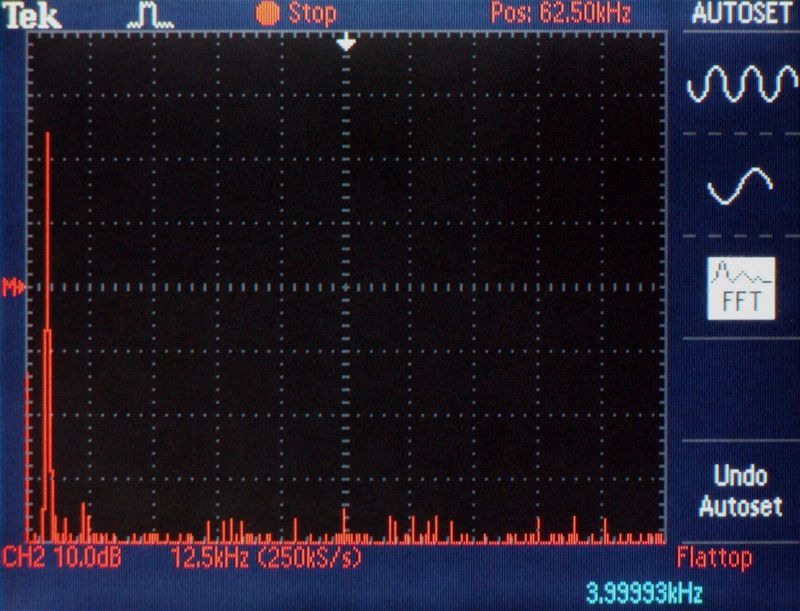
Figure 5. FFT plot of 4 kHz signal through AudioQuest GO-4 jumpers.
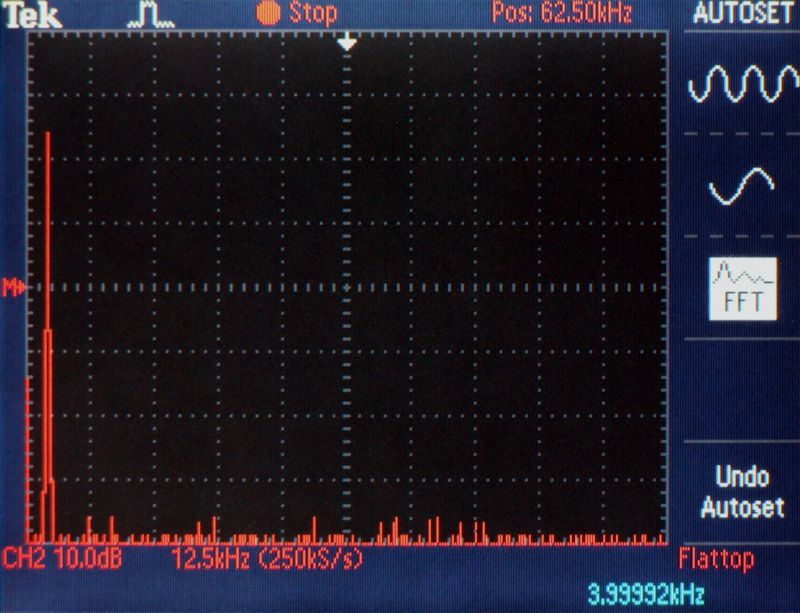
Figure 6. FFT plot of 4 kHz signal through AudioQuest Perfect Surface Copper+ jumpers.
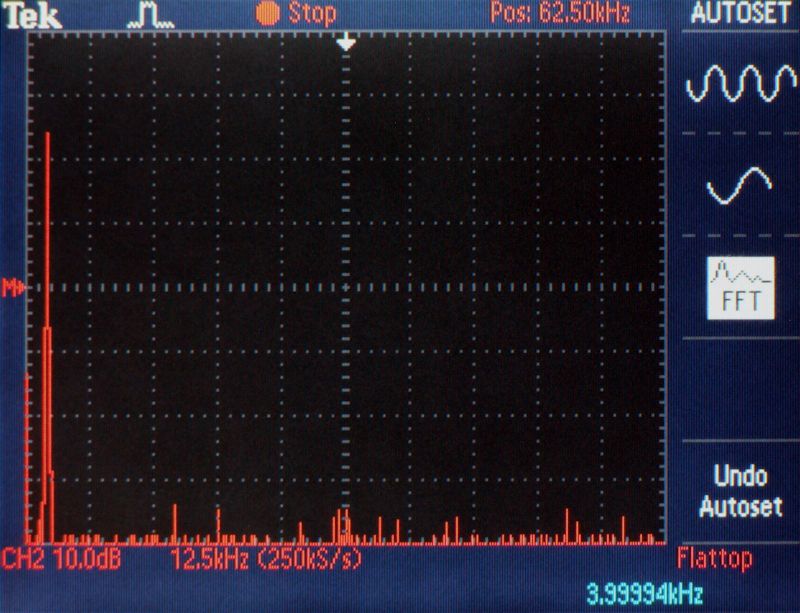
Figure 7. FFT plot of 4 kHz signal through AudioQuest Perfect Surface Silver jumpers.
Discussion Of Results
It seems counterintuitive that a few inches of copper or silver placed between low frequency and high frequency inputs of a loudspeaker would make a difference doesn't it? In gross terms and in terms of casual listening, it doesn't make a difference. When things such as ambient effects, micro-articulation, spatial rendering, image weight, sound stage proportions, and other stereophonic performance parameters become important to you, wire quality, along with component quality and other noise reduction exercises, does make a difference.
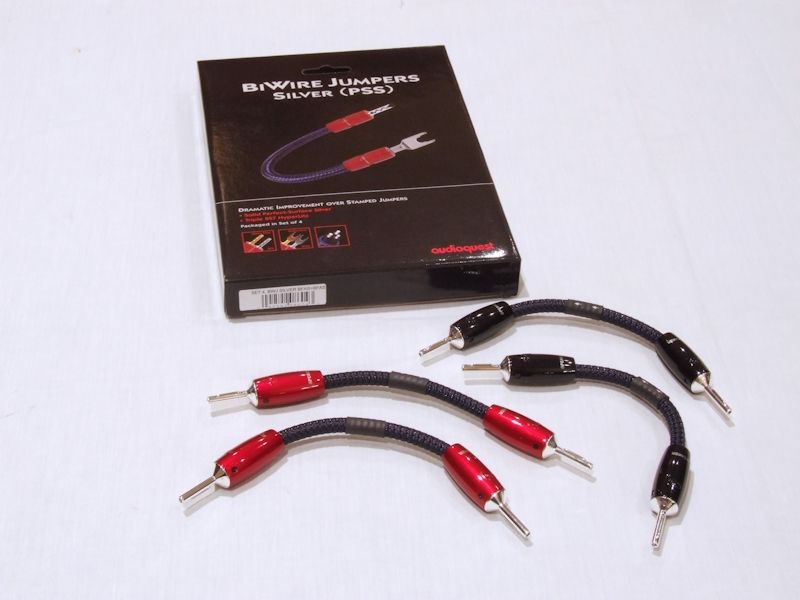
Figure 8. The winner, by a significant margin.
I recently upgraded the jumpers of my SDA SRS 1.2TL loudspeakers from AudioQuest Perfect Surface Copper+ (PSC+) to AudioQuest Perfect Surface Silver (PSS). During the course of the evaluation I decided to compare all the previous jumpers going back to the original equipment.

Figure 1. Top to bottom: 1. Original equipment jumpers, 2. Homemade jumpers made from DSR Silverline
speaker cable, 3. Homemade jumpers made from AudioQuest G0-4 speaker cable, 4. AudioQuest Perfect
Surface Copper+ jumpers, 5. AudioQuest Perfect Surface Silver jumpers.
The original equipment jumpers are Vampire Wire 12 AWG stranded wire. Cost: $0.
The homemade DSR Silverline jumpers are 10 AWG stranded speaker cable (copper and silver-plated copper strands) terminated with Monster Cable bananas. Cost: ~$15.
The homemade AudioQuest GO-4 jumpers have two 17 AWG solid core conductors and two 20 AWG solid core conductors for an effective size of 10 AWG. They are terminated with AudioQuest gold-plated BFA bananas. Cost: $75.
The AudioQuest Perfect Surface Copper+ jumpers have a 21 AWG, a 20 AWG, and a 19 AWG solid core conductor for an effective size of 15 AWG. They are terminated with AudioQuest silver-plated BFA bananas. MSRP: $185.
The AudioQuest Perfect Surface Silver jumpers have a 21 AWG, a 20 AWG, and a 19 AWG solid core conductor for an effective size of 15 AWG. They are terminated with AudioQuest silver-plated 500 Series bananas. MSRP: $429.
Listening Evaluation
Listening evaluation results are summarized in table 1. As I went up in wire quality the following overall improvements were heard:
1. More apparent sound level due to noise floor being lowered.
2. More clarity at the sides of the sound stage.
3. More sound stage depth.
4. More bass weight and articulation.
The song used for listening evaluations was "You are my love" by Gerald Albright ("New Beginnings" CD). The key points in the song I concentrated on were
1. The sound quality of the piano at the introduction.
2. The weight, detail and articulation of an electric bass slide at 1:42.
3. The ambient cues and detail of the background percussion instruments.
4. The overall weight, detail, and articulation of bass sounds.
5. The detail in reed and brass sounds of the alto saxophone.
Table 1.
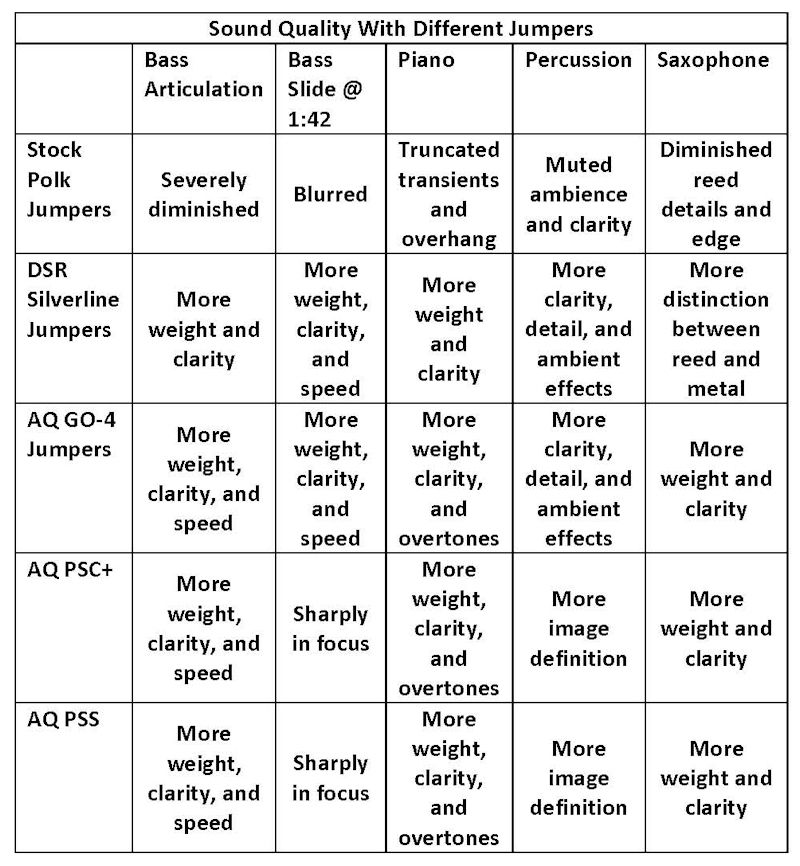

As noted in my review of the AQ Perfect Surface Copper+ jumpers, they sounded bad upon initial installation (link to review). The Perfect Surface Silver jumper sounded good, and better than the Perfect Surface Copper jumpers, right out of the box. Further improvement was heard after 24 hours of conditioning on the Audiodharma Cable Cooker.
Measurements
Noise spectrum (Fast Fourier Transform) measurements were taken with an oscilloscope at the high frequency inputs of the right speaker. A 4 kHz test signal from Contemporary Communications' "Precision Test Signals" CD was used. The oscilloscope was a Tektronix TDS 2012. It is easier to see differences in the oscilloscope plots if you save the pictures and view them in succession.

Figure 2. FFT plot of oscilloscope background noise.

Figure 3. FFT plot of 4 kHz signal through original equipment Vampire Wire jumpers.

Figure 4. FFT plot of 4 kHz signal through DSR Silverline jumpers.

Figure 5. FFT plot of 4 kHz signal through AudioQuest GO-4 jumpers.

Figure 6. FFT plot of 4 kHz signal through AudioQuest Perfect Surface Copper+ jumpers.

Figure 7. FFT plot of 4 kHz signal through AudioQuest Perfect Surface Silver jumpers.
Discussion Of Results
It seems counterintuitive that a few inches of copper or silver placed between low frequency and high frequency inputs of a loudspeaker would make a difference doesn't it? In gross terms and in terms of casual listening, it doesn't make a difference. When things such as ambient effects, micro-articulation, spatial rendering, image weight, sound stage proportions, and other stereophonic performance parameters become important to you, wire quality, along with component quality and other noise reduction exercises, does make a difference.

Figure 8. The winner, by a significant margin.
Proud and loyal citizen of the Digital Domain and Solid State Country!
Post edited by DarqueKnight on
Comments
-
Ray, did you notice any difference specifically in the high end using the silver over the copper wires (all variations of copper jumpers)?

Taken from a recent Audioholics reply regarding "Club Polk" and Polk speakers:
"I'm yet to hear a Polk speaker that merits more than a sentence and 60 seconds discussion."
My response is: If you need 60 seconds to respond in one sentence, you probably should't be evaluating Polk speakers.....
"Green leaves reveal the heart spoken Khatru"- Jon Anderson
"Have A Little Faith! And Everything You'll Face, Will Jump From Out Right On Into Place! Yeah! Take A Little Time! And Everything You'll Find, Will Move From Gloom Right On Into Shine!"- Arthur Lee -
Ray, did you notice any difference specifically in the high end using the silver over the copper wires (all variations of copper jumpers)?
The tonal quality of high frequencies did not change with silver, they just became more detailed and clearer. There was none of the harshness commonly associated with silver wire.Proud and loyal citizen of the Digital Domain and Solid State Country! -
Nice... the last one goes kinda up there in $$$.
So where/when does the upgrade end?
I guess there are better/more expensive jumpers than what you tested. Hmm...
Klipsch RB81, KG3.5, B&W DM602.5, Polk.
Subwoofers: Klipsch RW10, Triad ProSub Bronze. -
I recently added Shunyata VTX-11 jumpers to my Aerial Acoustics 7T speakers, and was amazed at the improvement. It was like getting a new pair of speakers. Later, I happened to be talking to a Shunyata employee and mentioned that, and he said they are finding that jumpers seem to have a bigger effect on speakers with better cross-overs. True or not, I don't know, but they sure worked on mine.
http://www.polkaudio.com/forums/showthread.php?159358-Speaker-jumpers-They-do-make-a-differenceLumin X1 file player, Westminster Labs interconnect cable
Sony XA-5400ES SACD; Pass XP-22 pre; X600.5 amps
Magico S5 MKII Mcast Rose speakers; SPOD spikes
Shunyata Triton v3/Typhon QR on source, Denali 2000 (2) on amps
Shunyata Sigma XLR analog ICs, Sigma speaker cables
Shunyata Sigma HC (2), Sigma Analog, Sigma Digital, Z Anaconda (3) power cables
Mapleshade Samson V.3 four shelf solid maple rack, Micropoint brass footers
Three 20 amp circuits. -
Nice... the last one goes kinda up there in $$$.
It was worth it.So where/when does the upgrade end?
When I die or run out of money. Whichever comes first.I guess there are better/more expensive jumpers than what you tested. Hmm...
Of course. Even when you get the absolute best available, it can always be tweaked.I happened to be talking to a Shunyata employee and mentioned that, and he said they are finding that jumpers seem to have a bigger effect on speakers with better cross-overs. True or not, I don't know, but they sure worked on mine.
That makes sense. The more resolving the speakers, the more you will be able to hear differences in component/accessory changes.Proud and loyal citizen of the Digital Domain and Solid State Country! -
Raife, have you tried biwiring? If so what cables did you use and what was your experience.
Just curious - Polk went to the trouble to place separate binding posts for highs and lows, and yet few of the members seem to cable their rig this way."Science is suppose to explain observations not dismiss them as impossible" - Norm on AA; 2.3TL's w/sonicaps/mills/jantzen inductors, Gimpod's boards, Lg Solen SDA inductors, RD-0198's, MW's dynamatted, Armaflex speaker gaskets, H-nuts, brass spikes, Cardas CCGR BP's, upgraded IC Cable, Black Hole Damping Sheet strips, interior of cabinets sealed with Loctite Power Grab, AI-1 interface with 1000VA A-L transformer -
I experimented with biwiring and biamping in 2003. I had bad results with biwiring and mixed results with biamping depending on the amplifiers used.
My-SDA-Bi-Wire-Bi-Amp-Adventure
My-SDA-SRS-1.2TL-Bi-Amp-Adventure
I wonder if Polk also had bad experiences with biwiring. The reason I ask is that the 1.2TL manual devotes 2 pages and three sections to a discussion of biwiring and biamping. However, biwiring is only discussed in one paragraph in which the biwiring process is defined. There are multiple paragraphs spanning three sections on biamping.
I might revisit biwiring in the future. Lower noise electronics and cables and better crossover components might mitigate some of the unpleasant effects I heard over 10 years ago.Proud and loyal citizen of the Digital Domain and Solid State Country! -
I am very much enjoying the Kimber 8VS's bi-wired with my LSi 15's. But thats just me. I dont delve as deep into it as Ray
 "....not everything that can be counted counts, and not everything that counts can be counted." William Bruce Cameron, Informal Sociology: A Casual Introduction to Sociological Thinking (1963)
"....not everything that can be counted counts, and not everything that counts can be counted." William Bruce Cameron, Informal Sociology: A Casual Introduction to Sociological Thinking (1963) -
Interesting. Is the internal cabinet wiring at least as good as some of the jumpers you tested? What gives the bass more weight clarity and speed when the jumper is feeding the tweeter array?'65 427 Shelby Cobra
'72 Triumph TR-6
__________________
'88 Polk SDA SRS 1.2, with upgraded XO caps and Erse SDA inductors
'86 Polk SDA CRS+
'84 Polk Monitor 10A (Peerless tweeters)
'05 HSU VTF-3 Sub (Original OEM)
'20 HSU VTF-3 Sub (three more, 100% cloned)
'93 Carver TFM-35
'88 Carver M-1.0t
'88 Adcom GFT-555
'88 Adcom GFP-555
'88 Adcom GFA-555 (upgraded/restored)
'88 Adcom GFA-555 (a second one upgraded/restored)
'05 Onkyo DV-555 media
'89 Fosgate 360 Digital Space Matrix
'89 Fosgate 360 Digital Space Matrix, internal surround amp bridged to drive only a center channel
'91 Kenwood Basic M1D Amp
'89 Pioneer Laser Disc media
'89 Sony SuperBeta HiFi media
One PGA2310 based custom built remote volume control
Four Polk T-15's
Four Polk TSi-200's
Four Polk TSi-100's
Two Polk CS-10's -
I just lol'd...hard! Thread is so full of win!
 Too many good quotes to list..waiting for some fresh ammo.
Too many good quotes to list..waiting for some fresh ammo.
-
Too many good quotes to list..waiting for some fresh ammo.

-
Interesting. Is the internal cabinet wiring at least as good as some of the jumpers you tested?
The internal wiring is at least as good as the second best jumper and is better than the bottom three jumpers. The original 16 AWG stranded wiring was first replaced with Cardas Litz 15.5 AWG litz wire. The Cardas wire was replaced with AudioQuest GO-4 15 AWG solid core hyper-litz speaker cable.
Cardas-Internal-Wire-Replacement-For-The-SDA-SRS-1.2TL
AudioQuest-GO-4-Internal-Wire-Replacement-For-The-SDA-SRS-1.2TLWhat gives the bass more weight clarity and speed when the jumper is feeding the tweeter array?
Noise and distortion in one part of the audio spectrum can mask details in another part of the audio spectrum. All the sound aggregates to the same place: your ears. Reducing noise and distortion in one part of the audio spectrum makes it easier to discern details in other parts of the audio spectrum.Proud and loyal citizen of the Digital Domain and Solid State Country! -
Political Correctness'.........defined
"A doctrine fostered by a delusional, illogical minority and rabidly promoted by an unscrupulous mainstream media, which holds forth the proposition that it is entirely possible to pick up a t-u-r-d by the clean end."
President of Club Polk -
I just lol'd...hard! Thread is so full of win!

Why would you come into and destroy someone's thread that is well documented, tested and written about the subject with an attitude like this? What are you possibly adding to the thread? I suggest you take your head full of scoff and start your own thread dedicated to scoffing. Please don't ruin Ray's. Thank you.
Otherwise, Jesse's suggestion above is necessary and warranted.
Taken from a recent Audioholics reply regarding "Club Polk" and Polk speakers:
"I'm yet to hear a Polk speaker that merits more than a sentence and 60 seconds discussion."
My response is: If you need 60 seconds to respond in one sentence, you probably should't be evaluating Polk speakers.....
"Green leaves reveal the heart spoken Khatru"- Jon Anderson
"Have A Little Faith! And Everything You'll Face, Will Jump From Out Right On Into Place! Yeah! Take A Little Time! And Everything You'll Find, Will Move From Gloom Right On Into Shine!"- Arthur Lee -
I just thought it was funny that the conclusion made was that the most expensive jumper was the "Best". Then the OP even admits that the internal wiring is only so good..and we haven't even gotten to the point of discussing tinsel leads yet! This may sound like I'm just trolling, but honestly...discussions like this one..over $300 jumpers..are so ridiculously slanted that it's not even funny. The ONLY way there's any merit to this discussion is if it's all done as a blind study, which it wasn't. EVERY component along the way must be factored in as well, which it isn't. Therefore this thread is completely full of pure opinion, and almost no supporting facts. Hard to "Like" a thread like that...regardless of how well written, or intentioned it was. Props to the OP on the informative first post and research, but it's human nature to simply qualify something as the "Best" when it's being quantified subconsciously. Blind tests are the only way something like this can be taken seriously (Especially considering that at best this thread would still be opinion based..) without introducing some sort of scientific process to determine which set of jumpers is truly the best (And not just to "Trained ears"). Take it how you want it, but that's the truth..and the reason that I scoffed at this thread. I'll refrain from posting anything else on this topic unless you guys really feel the need to debate an opinion based objective "Listening Test". I have no further reason to do such as I've already made my point, so carry on!
Just thought it was kinda ironic, I was warned about threads like these! Next thing you know I'll be getting asked to trade pinks..or in audiophile terms "Weber and Rinne results".Too many good quotes to list..waiting for some fresh ammo.
-
First, let me point out that DarqueKnight (Ray) is an extremely intelligent, well respected Electronics Engineer. If you possess better credentials, please post them.
Second, if you think that you can "invade" someone elses thread posting "the only way this thread has any merit is with a blind study" is a very slanted point of view is it not? While on the subject, have you read Ray's thread regarding blind studies? I definately recommend you do, so you can be educated regarding the cons of blind testing. If you believe that blind tests are the only way the subject of audio can be "taken seriously", you absolutely need to be educated. A link is here: http://www.polkaudio.com/forums/showthread.php?104973-A-Historical-Overview-of-Stereophonic-Blind-Testing&highlight=blind+studies
After reading this thread, then please come back to us regarding blind studies (tests).
Third, why would every component in the audio chain need to be considered when Ray was only listening to differences that the speaker jumpers made? Wouldn't it make more sense for Ray to be highly familiar with the audio signature that the rest of his gear made (in unison) other than the piece of gear (jumpers in this case) he is swapping out. The answer to that rhetorical question is "yes".
Fourth, do you also consider oscilloscope measurements "opinion"? Are they not "scientific"?
Fifth, I do believe you need discover what truth is. You have an agenda behind your posts. That is the only bias going on in this thread. I can guarantee that no "blind test" can overcome your bias.
Taken from a recent Audioholics reply regarding "Club Polk" and Polk speakers:
"I'm yet to hear a Polk speaker that merits more than a sentence and 60 seconds discussion."
My response is: If you need 60 seconds to respond in one sentence, you probably should't be evaluating Polk speakers.....
"Green leaves reveal the heart spoken Khatru"- Jon Anderson
"Have A Little Faith! And Everything You'll Face, Will Jump From Out Right On Into Place! Yeah! Take A Little Time! And Everything You'll Find, Will Move From Gloom Right On Into Shine!"- Arthur Lee -
I just thought it was funny that the conclusion made was that the most expensive jumper was the "Best".
I think it is hilarious that you jump to conclusions based on your bias against high performance audio gear, rather than reading and trying to understand the point of an article. The PSS jumpers were not the best because they were the most expensive. They were the best because they are constructed of better materials, they performed better in listening tests, and they had better measurable noise performance.
There are many instances on this board where I tried a "more expensive" product and rejected it due to disappointment in its performance and/or construction quality. Here are a couple of examples:
Shunyata-Anaconda-Zitron-Power-Cable-First-ImpressionsDarqueKnight wrote: »I have not heard the Focals, but I have heard the LSiM 707 and the B&W 802. I didn't hear anything during either audition that would make me want to replace my modified 1.2TLs.
I have auditioned loudspeakers which cost $15,000, $24,000, and $36,000 and I still came away preferring my 20+ year old modified SDA SRS 1.2TLs. By your warped, agenda driven logic, I should have grabbed the flashiest, most expensive component every time, but I didn't, and I don't. The total retail price of the electronics and source components driving my 24 year old loudspeakers is $73,100. If I were as swayed by marketing hype, brand names, and price as you seem to need to believe, I would "need" to have a "marquee" and "boutique audiophile" brand of loudspeakers to go with my "marquee" and "boutique audiophile" electronics.Then the OP even admits that the internal wiring is only so good..and we haven't even gotten to the point of discussing tinsel leads yet!
Really? Where did I admit that the internal wiring is only "so good"? What I said was "the internal wiring is at least as good as the second best jumper and is better than the bottom three jumpers."This may sound like I'm just trolling, but honestly...discussions like this one..over $300 jumpers..are so ridiculously slanted that it's not even funny.
Don't worry. AudioQuest is not going to show up at your door and force you to buy a pair of their $429 jumpers.The ONLY way there's any merit to this discussion is if it's all done as a blind study, which it wasn't.
Rather than drinking and swimming in the cool aid about blind tests, you might benefit from actually studying blind test theory and learning when blind tests are appropriate and when they are not.I was warned about threads like these!
It's a pity you were never warned about speaking of things you have no knowledge of and thereby casting doubts on your integrity and reading comprehension.Proud and loyal citizen of the Digital Domain and Solid State Country! -
Ray ,After seeing post#8( threw my rap out the window) I see that you indeed did not like or had a bad experience w/ bi-wiring.
I was going to ask you why bother w/ jumpers if in fact they obviously make specialty cable for this exact reason. I assume your
a big proponent of quality cable and interconnects and find it amazing that they did not work for you.
Hypothetically just as an example if you owned Vandersteens would you bi-wire as Richard V. himself almost demands it of his
customers or would you still use jumpers as you are now? None of my sets have the ability to bi-wire so I never even would know
if there was or was not a definitive difference in sound.
.2chl- Adcom GFA- 555-Onkyo P-3150v pre/amp- JVC-QL-A200 tt- Denon 1940 ci cdp- Adcom GFS-6 -Modded '87 SDA 2Bs - Dynamat Ext.- BH-5- X-Overs VR-3, RDO-194 tweeters, Larry's Rings, Speakon/Neutrik I/C- Cherry stain tops Advent Maestros,Ohm model E
H/T- Toshiba au40" flat- Yamaha RX- V665 avr- YSD-11 Dock- I-Pod- Klipsch #400HD Speaker set-
Bdrm- Nikko 6065 receiver- JBL -G-200s--Pioneer 305 headphones--Sony CE375-5 disc -
Blind tests are the only way something like this can be taken seriously.
Answer this:
1. Blind tests are designed for naProud and loyal citizen of the Digital Domain and Solid State Country! -
leftwinger57 wrote: »Ray ,After seeing post#8( threw my rap out the window) I see that you indeed did not like or had a bad experience w/ bi-wiring.
I was going to ask you why bother w/ jumpers if in fact they obviously make specialty cable for this exact reason.
I plan to revisit biwiring.leftwinger57 wrote: »I assume your a big proponent of quality cable and interconnects..
I am.leftwinger57 wrote: »I... find it amazing that they did not work for you.
You never know what will work, or not work, until you try it. I formerly had the low frequency and high frequency wires of my crossover soldered to the low frequency binding posts. When I upgraded the binding post plate and went back to a jumpered connection for the HF and LF binding posts, I was amazed that the jumpered connection sounded better than the directly soldered connection.leftwinger57 wrote: »Hypothetically just as an example if you owned Vandersteens would you bi-wire as Richard V. himself almost demands it of his
customers or would you still use jumpers as you are now? None of my sets have the ability to bi-wire so I never even would know
if there was or was not a definitive difference in sound.
.
I would try biwiring and jumpers to see which sounded best in my rig.Proud and loyal citizen of the Digital Domain and Solid State Country! -
DarqueKnight wrote: »Answer this:
1. Blind tests are designed for naToo many good quotes to list..waiting for some fresh ammo.
-
Can a "Trained Listener" not take part in a blind test?
Of course, but you avoided my question. What is the scientific validity of using blind testing for phenomena it was not designed to test?villian,2039953 wrote:What if the only "Blind" part of the test was knowing the price of the items being tested? My point is that every human has a bias. Naturally. Price, perceived quality, brand, color, etc. They're all points at which one can ermining what sounds best at the end of the day, even for ones self, is so hard.
It is sad that you are so hung up on how much things cost rather than how well they perform. Determining what sounds best is only hard for those who don't know how to listen.Proud and loyal citizen of the Digital Domain and Solid State Country! -
Not many folks would actually put that kind of time and effort into a simple listening test (Knowing that in the end, it's just that...a listening test..nothing scientific).
This was not a simple listening test. The evaluation methodology I use is based on established methods in sensory science. Do you know anything about scientific evaluation of multi-dimensional sensory stimuli?Proud and loyal citizen of the Digital Domain and Solid State Country! -
There has been a recent thread on bi-wiring on www.audiokarma.orgDarqueKnight wrote: »I plan to revisit biwiring.
http://www.audiokarma.org/forums/showthread.php?t=586253
The short story is that one noted speaker designer is all for it, recommending that identical cable sets are used for bass vs. treble:
http://www.vandersteen.com/pages/Answr7.htm
There IS a difference in the current carried by each wire set (bass vs. treble) even though the voltage/frequency in each cable set is essentially identical. Therefore there could be a mechanism beyond L, C, and R (plus noise) that "might" affect sonic performance. According to Vandersteen, that mechanism is the electromagnetic properties of the bass notes somehow "modulating" the low-current treble frequencies within the speaker cable. (any conductor becomes an electromagnet when current passes through.) Separating the bass current/electromagnetism from the treble current prevents this interaction, leading to improved sound quality that "isn't subtle".
Another noted speaker designer (Ken Kantor, NHT) says that while the currents are different in the two cable runs, it doesn't matter that they're separated--because contrary to what Vandersteen claims, the bass amperage/electromagnetism doesn't interact with the treble amperage/electromagnetism.
I don't understand the physics of what Ken is saying; I have to trust that he's correct. If he is correct, and if bi-wiring affects sound quality, that leaves the plain, old, ordinary L, C, and R (plus noise) of the cable sets as the only differences that can make a sonic difference. Bi-wiring with identical cables reduces the resistance, and increases the capacitance and inductance, each of which could be audible if the difference is large enough. (I don't know how doubling-up the wire affects the noise.) -
Time to flush this ****.
Wow, it's hard not to be impressed by the maturity and level headedness of that. Whether this is trolling or legitimate debate, I like that it's on this thread. It's a public forum and public actors should be able to express themselves as long as they do it in a reasonable way even if reasonable gets a little rude at times. The thing that irritates me the most about this thread is the suggestion that the membership of the forum gets to vote to evict someone just because we don't like the way they present their opinion. Be an adult and don't respond if you don't like someone's post.Can a "Trained Listener" not take part in a blind test?
What if the only "Blind" part of the test was knowing the price of the items being tested? My point is that every human has a bias. Naturally. Price, perceived quality, brand, color, etc. They're all points at which one can allow a biased, non-fact based opinion to be formed or pushed upon others. That is why determining what sounds best at the end of the day, even for ones self, is so hard.
I actually do like this thread and the research you've done so far. Not many folks would actually put that kind of time and effort into a simple listening test (Knowing that in the end, it's just that...a listening test..nothing scientific). I've found your results interesting, and didn't realize that you had tested some other stuff (More expensive stuff nonetheless) until you posted it earlier. I'm not here to rain on your parade, so don't take it that way. I just want to make sure that we all remember how powerful the mind is, including yourself. The BEST way to research and draw conclusions is with the Scientific Method, and that means doubting even your most bullet-proof results in a way which CONSTANTLY tears down old results and draws up new ones based on new theories. Even after all that you're still going to have swiss cheese..IE: Holes. Find those holes and address them. Question, Research, Hypothesis, Test, Analyze, Communicate, Repeat.
I think the fundamental flaw in the implied premise underlying your argument is that people are doing this for "science." I personally like science, but I'm sure as hell not spending thousands of dollars on audio crap in pursuit of scientific truth. I do it cause I like my music to sound as good as it can and, to a lesser degree, cause tinkering with this stuff is interesting and fun. Everyone gets to spend what they want to spend and hear what they want to hear and document their results in as much scientific detail as they choose so others can discuss the results and make more informed decisions about what they might like to try in their own systems. I'm pretty sure everyone reading this stuff is smart enough to appreciate "your mileage may vary." It's an Internet forum used by people who generally are doing this as a hobby, not a peer-reviewed scientific journal for crissakes. -
On3s&Z3r0s wrote: »I think the fundamental flaw in the implied premise underlying your argument is that people are doing this for "science."
I think it is ironic and telling that the people who harp and carp the most for "science" in audio are in actuality the least scientific of all. I asked villian twice to scientifically justify the use of blind tests (which are designed for untrained listeners) for stereophonic audio (which is designed for trained listeners). The best he could come up with is "can a trained listener not take part in a blind test?" That is the standard answer whenever it is pointed out that blind testing was not designed for multiple-stimuli events like stereo. I think it is ludicrous and desperate to insist on using a test that has been proven to have no scientific validity for the phenomena being tested.
People like villian claim to want to eliminate bias in audio testing, but look at the bias he exhibited in this thread:
1. He believes that blind testing is applicable for sensory stimuli for which it was not designed to test.
2. He wrongly assumed that I just pick the most expensive item in an audio test because I am biased toward expensive gear. That is as far from the truth as zero is from a trillion. I have threads going back over ten years that attest to that.
3. He wrongly assumed that I used a simple listening test, when my listening analysis was based on descriptive analysis methods using spatial mapping and detailed characterization of the quality of sound images.
4. He conveniently ignored the fact that I did an analysis of the noise spectrum performance of each item under review.
Ignorance really is bliss isn't it?:biggrin:Proud and loyal citizen of the Digital Domain and Solid State Country! -
DarqueKnight wrote: »I think it is ironic and telling that the people who harp and carp the most for "science" in audio are in actuality the least scientific of all. I asked villian twice to scientifically justify the use of blind tests (which are designed for untrained listeners) for stereophonic audio (which is designed for trained listeners). The best he could come up with is "can a trained listener not take part in a blind test?" That is the standard answer whenever it is pointed out that blind testing was not designed for multiple-stimuli events like stereo. I think it is ludicrous and desperate to insist on using a test that has been proven to have no scientific validity for the phenomena being tested....
I absolutely agree 100%. I also think villain's original posts were pretty much pure antagonism, but I also have the littlest bit of sympathy for the viewpoint. There is a lot of hyperbole in high-end audio (not in your work, which seems to strive for Spock-ian scientific objectivism, which I mean as a compliment :biggrin:). I've had the reaction a lot of times where I think, "you're telling me $400 for a couple inches of wire makes an audible difference?!? Can I get someone to back that up before I give eBay my credit card?" So I understand the impetus for objectivity and elimination of bias. But, for better or worse, I also have come to appreciate that in this particular context, trying to get to that point is pretty futile.
When the synergy of a system matters as much as it does in this context, there is no way that the change I hear by varying one small component is the same as someone else would hear in their system. I love reading these posts, but in my case my 2Bs don't have separate high/low inputs, and I'm thinking the silver AQ jumpers might be wasted on my Monitor 70's with my Pioneer receiver. So I can believe the result without thinking I could reproduce it in my circumstance. Ignorance is one thing, but at some point common sense has to come into play. Villain could save some typing by allowing for that.
So, all in all, I didn't mean to question the value of the scientific approach to this, and don't mean to beat a dead horse, but just disagree with the "ban the troll" stuff. -
Abandon all hope, ye who enter here. Resistance is futile. You will be assimilated.
- SDA 2BTL · Sonicaps · Mills resistors · RDO-198s · New gaskets · H-nuts · Erse inductors · BH5 · Dynamat
- Crossover upgrades by westmassguy
- Marantz 1504 AVR (front speaker pre-outs to Adcom 555)
- Adcom GFA-555 amp · Upgrades & speaker protection added by OldmanSRS
- Pioneer DV-610AV DVD/CD player
- SDA CRS+ · Hidden away in the closet
- SDA 2BTL · Sonicaps · Mills resistors · RDO-198s · New gaskets · H-nuts · Erse inductors · BH5 · Dynamat
-
DarqueKnight wrote: »I asked villian twice to scientifically justify the use of blind tests (which are designed for untrained listeners) for stereophonic audio (which is designed for trained listeners).
I answered you twice already, and stated that I have no desire to continue a fruitless conversation with you or anyone else in this thread as there's no need for that...but...I will once again post my direct response to your question in hope of a real answer.
Read these again, then please reply.
http://forums.audioholics.com/forums/general-av-discussions/2512-speakers%3B-when-good-enough-enough-3.html#post15412
http://www.webmd.com/pain-management/what-is-the-placebo-effect
..I found that one as a "Qualified Web MD'r" ;D
The only questions I have left for you are as follows: What makes you think that you are immune from the human condition and medical phenomenon known as "Placebo Effect"; Who qualified you as a "trained listener"; can you provide proof of this qualification; and why would the result of a blind test be any different for a trained listener vs an untrained listener when the reality of the matter has been proven otherwise? (See first link if you are wondering what I'm talking about, you should have already read it..but read again you obviously missed it..)
I don't doubt that you're dully qualified, but it sounds to me like you're using your qualification as a "cop out" of blind testing. Are you afraid of making the wrong calls if blind tested, because that's what it's starting to sound like. Too many good quotes to list..waiting for some fresh ammo.
Too many good quotes to list..waiting for some fresh ammo.
-
Why do some people try to apply a medical phenomenon to listening to music? The attempted correlation makes no sense. Well, it does make sense if you are listening to music after drinking beer, but even that, if recognized, can be a useful auditory evaluation tool.
The reason is they have no idea what they are talking about. Since they are clueless, they try to rationalize their opinion, an opinion based on zero experience, with irrelevant comparisons to medical studies. While that obviously makes zero sense, apparently they think it gives their fantasy opinion an appearance of legitimacy.Lumin X1 file player, Westminster Labs interconnect cable
Sony XA-5400ES SACD; Pass XP-22 pre; X600.5 amps
Magico S5 MKII Mcast Rose speakers; SPOD spikes
Shunyata Triton v3/Typhon QR on source, Denali 2000 (2) on amps
Shunyata Sigma XLR analog ICs, Sigma speaker cables
Shunyata Sigma HC (2), Sigma Analog, Sigma Digital, Z Anaconda (3) power cables
Mapleshade Samson V.3 four shelf solid maple rack, Micropoint brass footers
Three 20 amp circuits.









